
Chemistry of Heterocyclic Compounds: Fused Pyrimidines, Part II: Purines, Volume 24 By
2007 | 671 Pages | ISBN: 0471382051 | PDF | 28 MB
Content: Chapter I Introduction to the Purines (pages 1-30): Chapter II Syntheses from Pyrimidines (pages 31-90): Chapter III Purine Syntheses from Imidazoles and Other Precursors (pages 91-115): Chapter IV Purine and the C?Alkyl and C?Aryl Derivatives (pages 117-134): Chapter V Halogenopurines (pages 135-201): Chapter VI The Oxo?(Hydroxy?) and Alkoxypurines (pages 203-267): Chapter VII Thiopurines and Derivatives (pages 269-307): Chapter VIII The Amino (and Amino?Oxo) Purines (pages 309-365): Chapter IX The Purine Carboxylic Acids and Related Derivatives (pages 367-399): Chapter X Nitro?, Nitroso?, and Arylazopurines (pages 401-408): Chapter XI Purine?N?Oxides (pages 409-426): Chapter XII The Reduced Purines (pages 427-437): Chapter XIII The Spectra of Purines (pages 439-528):
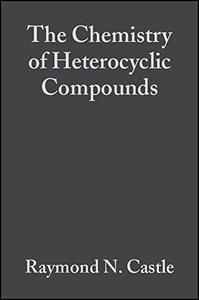
Chemistry of Heterocyclic Compounds: Condensed Pyridazines Including Cinnolines and Phthalazines, Volume 27 By
2007 | 1130 Pages | ISBN: 0471382116 | PDF | 17 MB
Content: Chapter I Cinnolines (pages 1-321): Gary M. SingermanChapter II Phthalazines (pages 323-760): Natu R. PatelChapter III Azolo? and Azinopyridazines and some Oxa and Thia Analogs (pages 761-1056): M. Tisler and B. Stanovnik

Chemistry of Heterocyclic Compounds: Benzofurans, Volume 29 By
2007 | 530 Pages | ISBN: 0471382078 | PDF | 16 MB
Content: Chapter I Benzofurans (pages 1-77): Chapter II Acylbenzofurans (pages 78-110): Chapter III Benzofurancarboxylic Acids (pages 111-142): Chapter IV Hydrogenated Benzofurans (pages 143-209): Chapter V Benzofuranones (pages 210-296): Chapter VI Naturally Occurring Benzofurans (pages 297-369): Chapter VII Naturally Occurring Spirobenzofuranones (pages 370-430): Chapter VIII Less Common and Modified Naturally Occurring Benzofurans (pages 457-462):
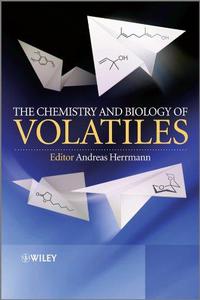
Chemistry and Biology of Volatiles, The By
2010 | 418 Pages | ISBN: 0470777788 | PDF | 11 MB
"Coming to a conclusion, this wonderful, informative and very interesting book presents an excellent overview of small volatile organic compounds and their role in our life and environment. Really fascinating is the entirety of scientific disciplines which were addressed by this book." -Flavour and Fragrance Journal, 2011 "... this book deserves to be a well-used reference in the library of any laboratory specialising in VOC". -Chemistry World, 2011 Volatile compounds are molecules with a relatively low molecular weight allowing for an efficient evaporation into the air. They are found in many areas of our everyday-life: they are responsible for the communication between species such as plants, insects or mammals; they serve as flavours or fragrances in many food products or perfumed consumer articles; and they play an important role in atmospheric chemistry. This book takes an interdisciplinary approach to volatile molecules. Review-style introductions to the main topics in volatile chemistry and biology are provided by international experts, building into a broad overview of this fascinating field.Topics covered include:The structural variety of volatile compounds Biogeneration of volatiles Synthesis of natural and non-natural volatiles Analysis of volatiles Volatile compounds as semiochemicals in plant-plant or plant-insect interactions Volatiles in pest control Pheromones and the influence of volatiles on mammals Olfaction and human perception Volatiles as fragrances The generation of flavours and food aroma compounds Stabilisation and controlled release of volatiles The impact of volatiles on the environment and the atmosphere Content: Chapter 1 Volatiles - An Interdisciplinary Approach (pages 1-10): Andreas HerrmannChapter 2 Biosynthesis and Emission of Isoprene, Methylbutanol and Other Volatile Plant Isoprenoids (pages 11-47): Hartmut K. LichtenthalerChapter 3 Analysis of the Plant Volatile Fraction (pages 49-93): Patrizia Rubiolo, Barbara Sgorbini, Erica Liberto, Chiara Cordero and Carlo BicchiChapter 4 Plant Volatile Signalling: Multitrophic Interactions in the Headspace (pages 95-122): Andre Kessler and Kimberly MorrellChapter 5 Pheromones in Chemical Communication (pages 123-149): Kenji MoriChapter 6 Use of Volatiles in Pest Control (pages 151-172): J. Richard M. Thacker and Margaret R. TrainChapter 7 Challenges in the Synthesis of Natural and Non?Natural Volatiles (pages 173-202): Anthony A. BirkbeckChapter 8 The Biosynthesis of Volatile Sulfur Flavour Compounds (pages 203-229): Meriel G. JonesChapter 9 Thermal Generation of Aroma?Active Volatiles in Food (pages 231-252): Christoph CernyChapter 10 Human Olfactory Perception (pages 253-289): Alan GelperinChapter 11 Perfumery - The Wizardry of Volatile Molecules (pages 291-305): Christophe LaudamielChapter 12 Microencapsulation Techniques for Food Flavour (pages 307-332): Youngjae Byun, Young Teck Kim, Kashappa Goud H. Desai and Hyun Jin ParkChapter 13 Profragrances and Properfumes (pages 333-362): Andreas HerrmannChapter 14 Reactions of Biogenic Volatile Organic Compounds in the Atmosphere (pages 363-388): Russell K. Monson
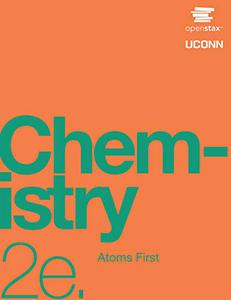
OpenStax, "Chemistry: Atoms First 2e by OpenStax"
English | 2019 | pages: 1328 | ISBN: 1947172646, 1593995792 | PDF | 209,4 mb
Chemistry: Atoms First 2e is a peer\-reviewed, openly licensed introductory textbook produced through a collaborative publishing partnership between OpenStax and the University of Connecticut and UConn Undergraduate Student Government Association. This text is an atoms\-first adaptation of OpenStax Chemistry 2e. The intention of atoms\-first involves a few basic principles: first, it introduces atomic and molecular structure much earlier than the traditional approach, and it threads these themes through subsequent chapters. This approach may be chosen as a way to delay the introduction of material such as stoichiometry that students traditionally find abstract and difficult, thereby allowing students time to acclimate their study skills to chemistry. Additionally, it gives students a basis for understanding the application of quantitative principles to the chemistry that underlies the entire course. It also aims to center the study of chemistry on the atomic foundation that many will expand upon in a later course covering organic chemistry, easing that transition when the time arrives.
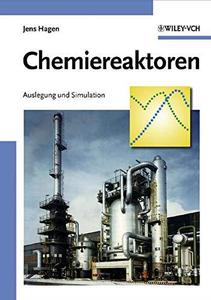
Chemiereaktoren: Auslegung und Simulation By Prof. Dr. Jens Hagen(auth.)
2004 | 391 Pages | ISBN: 352730827X | PDF | 6 MB
Content: Chapter 1 Einfuhrung (pages 1-8): Chapter 2 Chemiereaktoren im Uberblick (pages 9-18): Chapter 3 Physikalisch?chemische Aspekte der Reaktionstechnik (pages 19-37): Chapter 4 Grundlagen der Reaktormodellierung und ?simulation (pages 39-44): Chapter 5 Ideale, isotherm betriebene Reaktoren (pages 45-124): Chapter 6 Messung und Auswertung kinetischer Daten fur den Reaktorbetrieb (pages 125-178): Chapter 7 Nichtideale Reaktoren und Reaktormodelle (pages 179-220): Chapter 8 Reaktorauslegung unter Berucksichtigung des Warmetransports (pages 221-252): Chapter 9 Der Einfluss des Stoffubergangs auf den Reaktorbetrieb (pages 253-292): Chapter 10 Technische Reaktionsfuhrung (pages 293-311): Chapter 11 Scale?up von Chemiereaktoren (pages 313-335): Chapter 12 Losungen zu den Ubungsaufgaben (pages 337-360):
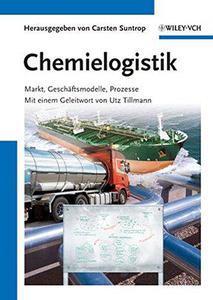
Chemielogistik: Markt, Geschaftsmodelle, Prozesse By
2011 | 341 Pages | ISBN: 352732531X | PDF | 4 MB
Geleitwort. Vorwort. Liste der Autoren. Abkurzungsverzeichnis.I I Einleitung.1 Chemielogistik im Kontext allgemeiner logistischer Anforderungen (Rolf Dietmar Grap, Birte Milnickel). 1.1 Ausgangssituation der chemischen Industrie. 1.2 Sicherheit in der Transportlogistik. 1.3 Sicherheitsma?nahmen in der Gefahrgutlogistik. 1.4 Zusammenfassung. II Marktentwicklungen.2 Marktentwicklungen und Trends (Cord Matthies). 2.1 Marktteilnehmer, Marktstrukturen und Entwicklung. 2.2 Clusterbildung. 3 Geschaftsstrategien in der Chemielogistik (Kerstin Seeger, Carsten Suntrop). 3.1 Einleitung. 3.2 Grundlagen. 3.3 Marktsituation Chemielogistik. 3.4 Entwicklungsszenarien der Geschaftsmodelle in der Chemielogistik. 3.5 Fazit. 4 Verkehrsinfrastruktur in Zentral- und Osteuropa-Herausforderungen aus Sicht der chemischen Industrie und Logistikdienstleister (Hannelore Hofmann-Prokopczyk, Christian W. Flotzinger, Fritz Starkl). 4.1 Einleitung81 4.2 Forschungsfokus und methodische Vorgehensweise. 4.3 Verkehrsinfrastrukturelle Herausforderungen in Zentral- und Osteuropa aus Sicht der chemischen Industrie und des Logistiksektors. 4.4 Handlungsempfehlungen zur Verbesserung der Verkehrsinfrastruktur und deren Rahmenbedingungen in Zentral- und Osteuropa. 5 Logistikanforderungen des Chemieparkmanagers (Ernst Grigat). 5.1 Einleitung. 5.2 Standortrelevante Entwicklungen der deutschen Chemieindustrie. 5.3 Wie lasst sich logistische Komplexitat an Chemiestandorten managen? 5.4 Fazit und Ausblick. 6 Wertschopfungspartnerschaften fur Stuckguter in der Chemielogistik (Thomas Krupp, Christian Kille). 6.1 Logistik in der chemischen Industrie-Moglichkeiten fur Wertschopfungspartnerschaften im Bereich handling-bedurftiger Stuckguter. 6.2 Geschaftsmodelle-bewusste Auswahl strategischer Aktivitaten von Logistikdienstleistern. 6.3 Marktbedingungen in der Chemiebranche-wirtschaftliches und logistisches Profil handling-bedurftiger Stuckguter. 6.4 Geschaftsmodelle von Spezialisten fur handling-bedurftige Stuckguter-Fallbeispiel Dachser Chem-Logistics. 6.5 Fazit-vielversprechende Outsourcing-Moglichkeiten fur die chemische Industrie. 7 Integrierte Gefahrstoff logistik an Chemie- und Pharmastandorten (Jochen Schmidt). 7.1 Standortlogistik an Chemiestandorten. 7.2 Geschaftsmodell: Kosten- und Qualitatsvorteile durch integrierte Gefahrstofflogistik. 7.3 Fazit und Ausblick. 8 Das Integrierte Geschaftsmodell der Chemielogistik (Steffen Bauer). 8.1 Ausgangslage. 8.2 Trends und Anforderungen in der Chemielogistik. 8.3 Spezielle Positionierung entlang der Supply Chain der Kunden. 8.4 Geschaftsmodell als integrative Gesamtlosung-ein Fazit. 8.5 Integratives Geschaftsmodell in der Praxis. 8.6 Ausblick. 9 Erfolg durch die Vernetzung unterschiedlicher Logistikdienstleistungen (Ortwin Nast). 9.1 Das Geschaftsmodell der Hoyer-Gruppe. 9.2 Chemielogistik. 9.3 Praxisbeispiele. 9.4 Hoyer-Aktivitaten im Wachstumsmarkt AdBlue. 9.5 Bedeutung der IT-Vernetzung mit den Kunden. 9.6 Die Sicherheits- und Servicekultur der Hoyer-Gruppe. 9.7 Weitere Geschaftsbereiche von Hoyer. 9.8 Die Terminalaktivitaten der Hoyer-Gruppe und das System des kombinierten Verkehrs. 9.9 Das Erfolgsmodell IBC: Komplettangebote fur unterschiedliche Branchen. 9.10 Unternehmensphilosophie: Ein Epilog. 10 Nachhaltige Chemie-Hub-Netzwerke-Merkmale zur differenzierten Geschaftsentwicklung (Hans-Jorg Bertschi). 10.1 Anforderungen an die Chemielogistik aus Kundensicht. 10.2 Herausforderungen und Marktentwicklungen in der Chemielogistik. 10.3 Das Geschaftsmodell der nachhaltigen Chemie-Hub-Netzwerke. 10.4 Erfolgsfaktoren und Differenzierungsmerkmale des nachhaltigen Chemie-Hub-Netzwerkes. 10.5 Praxisbeispiele fur ma?geschneiderte Kundenlosungen. 10.6 Zusammenfassendes Fazit. 11 Standortlogistik fur die chemische Industrie (Andreas Hardt, Gerd Clemens, Lothar Hinterlang). 11.1 Einleitung. 11.2 Chemielogistik und Standortlogistik. 11.3 Anforderungen an Logistikdienstleister in der Standortlogistik. 11.4 Wie kann ein Logistikdienstleister diesen Herausforderungen begegnen? 11.5 Innovation in der Chemielogistik. 11.6 Fazit und Ausblick. IV Prozesse und IT.12 Innovatives Prozessmodell fur die Chemielogistik (Bernhard Muhler, Karl-Heinz Oeller). 12.1 Der Wunsch: Nachhaltige Wettbewerbsfahigkeit durch Innovationen. 12.2 Problemaspekte der Ausgangssituation. 12.3 Das Prozessinnovationsprojekt in der Chemielogistik. 12.4 Das Organisationsverstandnis und Menschenbild hinter dem strategieorientierten Innovations- und Transformationsansatz. 12.5 Der wirkungsvolle und strategieorientierte Innovations- und Transformationsansatz im Detail. 12.6 Fazit. 13 Managen von Dienstleistern in der Chemielogistik-Von der Auswahl des optimalen Dienstleisters bis zur Gestaltung der Schnittstellen im Alltagsgeschaft (Marcus Bender, Dennis Mulalic). 13.1 Einleitung. 13.2 Market Screening: Potenzielle Dienstleister auswahlen. 13.3 Der Auswahlprozess. 13.4 Managen der Schnittstellen. 13.5 Monitoring/Performance-Analyse und regelma?ige Feedbackgesprache. 13.6 Fazit. 14 Logistik-Geschaftsprozess-Integration von IT-Systemen (Klaus Heep). 14.1 Vorbemerkung. 14.2 Serviceorientierte Architekturen (SOA). 14.3 Diskussion der Umsetzbarkeit im Bereich Logistik fur die Prozessindustrie (Chemie, Pharma, Logistik). 14.4 Zusammenfassung. 14.5 Fazit. 15 Innovative Prozessmodellierung und ihre IT-Umsetzung in der Chemielogistik-Vom Praxisprozess zur IT-Losung (Frank Gummer, Andreas Hardt). 15.1 Besonderheiten der Chemielogistik. 15.2 Das Prozessmodell-Logistikprozesse transparent machen und effizient steuern. 15.3 Umsetzung des Prozessmodells in eine leistungsfahige IT-Losung. 15.4 Fazit und Ausblick. 15.5 Zusammenfassung. V Fazit und Ausblick.16 Tendenzen im Chemielogistikmarkt (Carsten Suntrop). Index.Content: Chapter 1 Chemielogistik im Kontext allgemeiner logistischer Anforderungen (pages 1-22): Rolf Dietmar Grap and Birte MilnickelChapter 2 Marktentwicklungen und Trends (pages 23-50): Cord MatthiesChapter 3 Geschaftsstrategien in der Chemielogistik (pages 51-79): Kerstin Seeger and Prof. Dr. Carsten SuntropChapter 4 Verkehrsinfrastruktur in Zentral? und Osteuropa - Herausforderungen aus Sicht der chemischen Industrie und Logistikdienstleister (pages 81-111): Hannelore Hofmann?Prokopczyk, Christian W. Flotzinger and Fritz StarklChapter 5 Logistikanforderungen des Chemieparkmanagers (pages 113-123): Ernst GrigatChapter 6 Wertschopfungspartnerschaften fur Stuckguter in der Chemielogistik (pages 125-150): Thomas Krupp and Christian KilleChapter 7 Integrierte Gefahrstofflogistik an Chemie? und Pharmastandorten (pages 151-170): Jochen SchmidtChapter 8 Das Integrierte Geschaftsmodell der Chemielogistik (pages 171-188): Steffen BauerChapter 9 Erfolg durch die Vernetzung unterschiedlicher Logistikdienstleistungen (pages 189-210): Ortwin NastChapter 10 Nachhaltige Chemie?Hub?Netzwerke - Merkmale zur differenzierten Geschaftsentwicklung (pages 211-226): Hans?Jorg BertschiChapter 11 Standortlogistik fur die chemische Industrie (pages 227-242): Andreas Hardt, Gerd Clemens and Lothar HinterlangChapter 12 Innovatives Prozessmodell fur die Chemielogistik (pages 243-263): Bernhard Muhler and Karl?Heinz OellerChapter 13 Managen von Dienstleistern in der Chemielogistik - Von der Auswahl des optimalen Dienstleisters bis zur Gestaltung der Schnittstellen im Alltagsgeschaft (pages 265-279): Marcus Bender and Dennis MulalicChapter 14 Logistik?Geschaftsprozess?Integration von IT?Systemen (pages 281-298): Klaus HeepChapter 15 Innovative Prozessmodellierung und ihre IT?Umsetzung in der Chemielogistik - Vom Praxisprozess zur IT?Losung (pages 299-312): Frank Gummer and Andreas HardtChapter 16 Tendenzen im Chemielogistikmarkt (pages 313-320): Prof. Dr. Carsten Suntrop
Chemical Weapons Convention Chemicals Analysis Sample Collection, Preparation and Analytical Methods
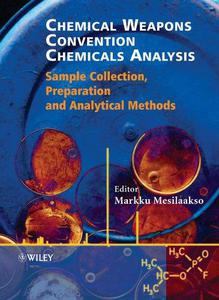
Chemical Weapons Convention Chemicals Analysis: Sample Collection, Preparation and Analytical Methods By
2005 | 462 Pages | ISBN: 0470847565 | PDF | 9 MB
Describes the procedures for collection of samples, sample preparation, and analysis of CWC-related chemicals. It deals with analytical procedures that can be followed in well-equipped off-site laboratories (designated laboratories), as well as the on-site analytical procedures that the OPCW inspectors use in sample collection and preliminary analysis of the samples in field conditions. A one-of-a-kind, highly topical handbook for every expert in the chemical weapons field Outlines the methods for analysing chemical weapons both on and off site Authored by international experts in the field from top laboratories in both government and academic institutions Content: Chapter 1 Introduction (pages 1-5): Dr. Markku MesilaaksoChapter 2 Sampling and Analysis in the Chemical Weapons Convention and the OPCW Mobile Laboratory (pages 7-31): Stefan MoglChapter 3 On?Site Analysis by the Inspection Team. Sampling, Analysis, Equipment, Procedures and Strategies (pages 33-50): Sabine KrugerChapter 4 The OPCW Gas Chromatograph/Mass Spectrometer for On?Site Analysis. Instrumentation, AMDIS Software and Preparations for Use (pages 51-64): Mieczyslaw SokolowskiChapter 5 Hazardous Environment Monitoring (pages 65-88): George M. Murray and David S. LawrenceChapter 6 A Comprehensive Review of the Official OPCW Proficiency Test (pages 89-132): Jeanet HendrikseChapter 7 The OPCW Central Analytical Database (pages 133-149): Charles NyanyiraChapter 8 Analysis Strategy for Analysis of Chemicals Related to the Chemical Weapons Convention in An Off?Site Laboratory (pages 151-162): Dr. Markku MesilaaksoChapter 9 Sample Preparation for Analysis of Chemicals Related to the Chemical Weapons Convention in an Off?Site Laboratory (pages 163-183): Marja?Leena KuitunenChapter 10 Gas Chromatography in Screening of Chemicals Related to the Chemical Weapons Convention (pages 185-248): Olli KostiainenChapter 11 Gas Chromatography/Mass Spectrometry in Analysis of Chemicals Related to the Chemical Weapons Convention (pages 249-281): Eric R. J. WilsChapter 12 Liquid Chromatography/Mass Spectrometry in Analysis of Chemicals Related to the Chemical Weapons Convention (pages 283-320): R. M. Black and R. W. ReadChapter 13 Nuclear Magnetic Resonance Spectroscopy in Analysis of Chemicals Related to the Chemical Weapons Convention (pages 321-351): Dr. Markku Mesilaakso and Andreas NiederhauserChapter 14 Fourier Transform Infrared Spectroscopy in Analysis of Chemicals Related to the Chemical Weapons Convention (pages 353-385): Martin T. SoderstromChapter 15 Capillary Electrophoresis in Analysis of Chemicals Related to the Chemical Weapons Convention (pages 387-401): Jeremy E. Melanson and Camille A. BouletChapter 16 Methods for the Retrospective Detection of Exposure to Toxic Scheduled Chemicals. Part A: Analysis of Free Metabolites (pages 403-431): R. M. Black and D. NoortChapter 17 Methods for Retrospective Detection of Exposure to Toxic Scheduled Chemicals. Part B: Mass Spectrometric and Immunochemical Analysis of Covalent Adducts to Proteins and DNA (pages 433-451): D. Noort and R. M. Black
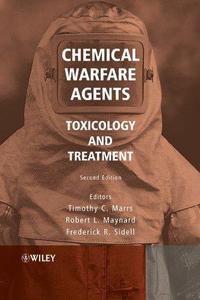
Chemical Warfare Agents: Toxicology and Treatment, Second Edition By
2007 | 733 Pages | ISBN: 0470013591 | PDF | 16 MB
Chemical Warfare Agents, Second Edition has been totally revised since the successful first edition and expanded to about three times the length, with many new chapters and much more in-depth consideration of all the topics. The chapters have been written by distinguished international experts in various aspects of chemical warfare agents and edited by an experienced team to produce a clear review of the field. The book now contains a wealth of material on the mechanisms of action of the major chemical warfare agents, including the nerve agent cyclosarin, formally considered to be of secondary importance, as well as ricin and abrin. Chemical Warfare Agents, Second Edition discusses the physico-chemical properties of chemical warfare agents, their dispersion and fate in the environment, their toxicology and management of their effects on humans, decontamination and protective equipment. New chapters cover the experience gained after the use of sarin to attack travellers on the Tokyo subway and how to deal with the outcome of the deployment of riot control agents such as CS gas. This book provides a comprehensive review of chemical warfare agents, assessing all available evidence regarding the medical, technical and legal aspects of their use. It is an invaluable reference work for physicians, public health planners, regulators and any other professionals involved in this field. Review of the First Edition: "What more appropriate time for a title of this scope than in the post 9/11 era? ...a timely, scholarly, and well-written volume which offers much information of immense current and...future benefit." ?VETERINARY AND HUMAN TOXICOLOGYContent: Chapter 1 Opinions of Chemical Warfare (pages 1-20): Robert L. MaynardChapter 2 The Physicochemical Properties and General Toxicology of Chemical Warfare Agents (pages 21-65): Robert L. MaynardChapter 3 Dispersion and Modelling of the Spread of Chemical Warfare Agents (pages 67-87): Roger D. Kingdon and Stephen WalkerChapter 4 The Fate of Chemical Warfare Agents in the Environment (pages 89-125): Sylvia S. Talmage, Nancy B. Munro, Annetta P. Watson, Joseph F. King and Veronique HauschildChapter 5 Biological Markers of Exposure to Chemical Warfare Agents (pages 127-156): Robin M. Black and Daan NoortChapter 6 Respiratory Protection (pages 157-173): Anthony Wetherell and George MathersChapter 7 Responding to Chemical Terrorism: Operational Planning and Decontamination (pages 175-190): Gron Roberts and Robert L. MaynardChapter 8 Toxicology of Organophosphate Nerve Agents (pages 191-221): Timothy C. MarrsChapter 9 A History of Human Studies with Nerve Agents by the UK and USA (pages 223-239): Frederick R. SidellChapter 10 Nerve Agents: Low?Dose Effects (pages 241-248): Leah ScottChapter 11 Managing Civilian Casualties Affected by Nerve Agents (pages 249-260): J. Allister Vale, Paul Rice and Timothy C. MarrsChapter 12 The Management of Casualties Following Toxic Agent Release: The Approach Adopted in France (pages 261-276): David J. BakerChapter 13 The Dark Morning: The Experiences and Lessons Learned from the Tokyo Subway Sarin Attack (pages 277-285): Tetsu Okumura, Tomohisa Nomura, Toshishige Suzuki, Manabu Sugita, Yasuo Takeuchi, Toshio Naito, Sumie Okumura, Hiroshi Maekawa, Nobukatsu Takasu, Kunihisa Miura and Kouichiro SuzukiChapter 14 Atropine and Other Anticholinergic Drugs (pages 287-303): John H. McDonough and Tsung?Ming ShihChapter 15 Oximes (pages 305-329): Peter A. Eyer and Franz WorekChapter 16 The Use of Benzodiazepines in Organophosphorus Nerve Agent Intoxication (pages 331-342): Timothy C. Marrs and Ake SellstromChapter 17 Pretreatment for Nerve Agent Poisoning (pages 343-353): Leah ScottChapter 18 Gulf War Syndrome (pages 355-373): Simon Wessely and Mathew HotopfChapter 19 Mustard Gas (pages 375-407): Robert L. MaynardChapter 20 Dermal Aspects of Chemical Warfare Agents (pages 409-422): Robert P. ChilcottChapter 21 Sulphur Mustard Injuries of the Skin: Pathophysiology and Clinical Management of Chemical Burns (pages 423-442): Paul RiceChapter 22 The Normal Bone Marrow and Management of Toxin?Induced Stem Cell Failure (pages 443-466): Jennifer G. TreleavenChapter 23 Organic Arsenicals (pages 467-475): Timothy C. Marrs and Robert L. MaynardChapter 24 Phosgene (pages 477-494): Robert L. MaynardChapter 25 Cyanides: Chemical Warfare Agents and Potential Terrorist Threats (pages 495-542): Bryan Ballantyne, Chantal Bismuth and Alan H. HallChapter 26 Riot Control Agents in Military Operations, Civil Disturbance Control and Potential Terrorist Activities, with Particular Reference to Peripheral Chemosensory Irritants (pages 543-612): Bryan BallantyneChapter 27 Ricin and Abrin Poisoning (pages 613-631): Sally M. Bradberry, J. Michael Lord, Paul Rice and J. Allister ValeChapter 28 The Total Prohibition of Chemical Weapons (pages 633-662): Graham S. PearsonChapter 29 An A-Z of Compounds of Interest in Relation to Chemical Warfare and Other Malevolent Uses of Poisons (pages 663-708): Philippa Edwards and Robert L. Maynard
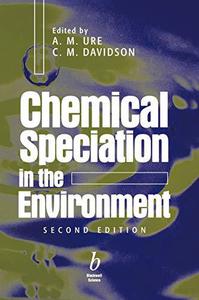
Chemical Speciation in the Environment, Second Edition By
2002 | 465 Pages | ISBN: 063205848X | PDF | 4 MB
Considerable recent research has focused on the topic of chemical speciation in the environment. It is increasingly realised that the distribution, mobility and biological availability of chemical elements depend not simply on their concentrations but, critically, on the forms in which they occur in natural systems. Continuing developments in analytical chemistry have made speciation practicable even where analytes are present at trace levels (as is often the case in natural samples).In the second edition of this book, the expertise of scientists involved in chemical speciation in various fields have been brought together to provide an overview of the current status of speciation science and indicate how the field may develop in the future.Content: Chapter 1 Introduction (pages 1-5): A.M. Ure and C.M. DavidsonChapter 2 General Strategies for Speciation (pages 7-29): W.F. PickeringChapter 3 Direct Methods of Metal Speciation (pages 30-66): B.A. Goodman and S.M. GlidewellChapter 4 Hybrid Methods of Speciation (pages 67-88): G.M. GreenwayChapter 5 Predicting Chemical Speciation and Computer Simulation (pages 89-131): D.G. Lumsdon and L.J. EvansChapter 6 Quality Control in Speciation Studies for Environmental Monitoring (pages 132-158): Ph. QuevauvillerChapter 7 Speciation of Metals in the Atmosphere (pages 159-187): L.J. Spokes and T.D. JickellsChapter 8 Speciation in Freshwaters (pages 188-236): M. Filella, R.M. Town and J. BuffleChapter 9 Speciation in Soils (pages 237-264): G.S.P. Ritchie and G. SpositoChapter 10 Chemical Speciation in Soils and Related Materials by Selective Chemical Extraction (pages 265-300): A.M. Ure and C.M. DavidsonChapter 11 Speciation of Trace Metals in Sediments (pages 301-321): M. KerstenChapter 12 Speciation in Seawater (pages 322-357): R.H. ByrneChapter 13 Speciation of Radionuclides (pages 358-386): B.R. Harvey and K.S. LeonardChapter 14 Speciation of Metals and Metalloids in Biological Systems (pages 387-400): P.H.E. GardinerChapter 15 Trends and Developments (pages 401-440): R.R. Barefoot


